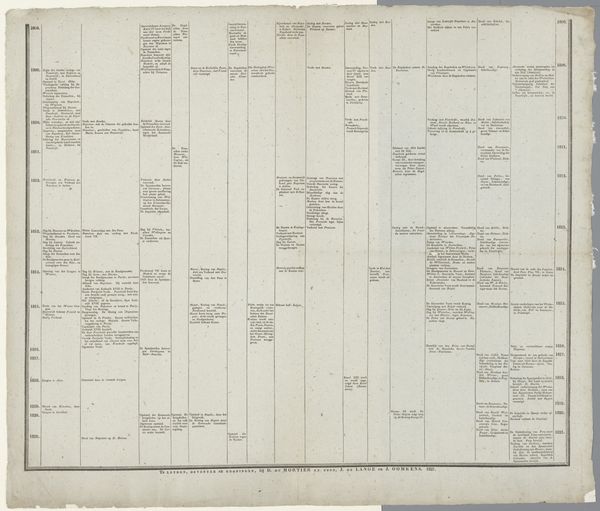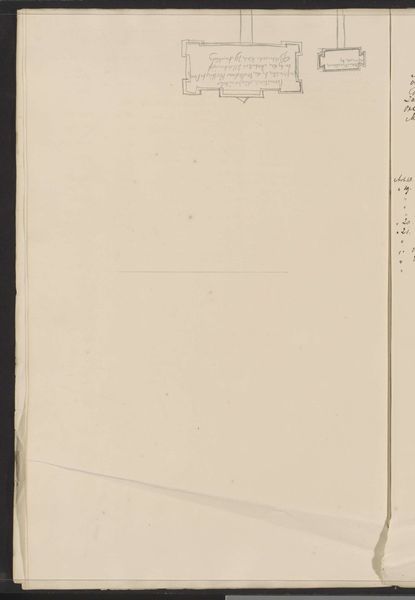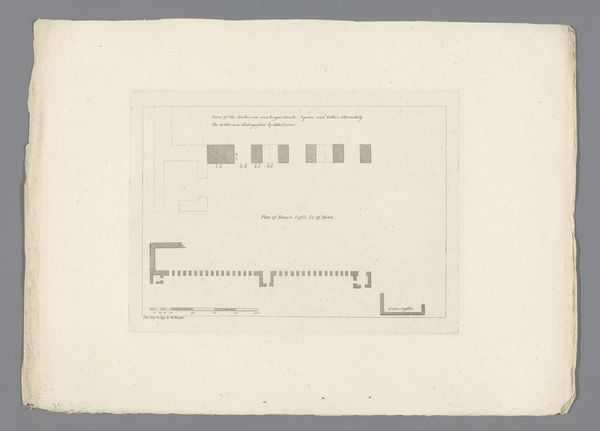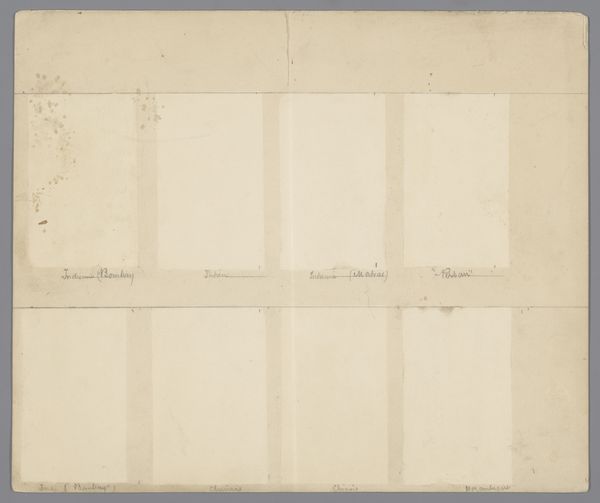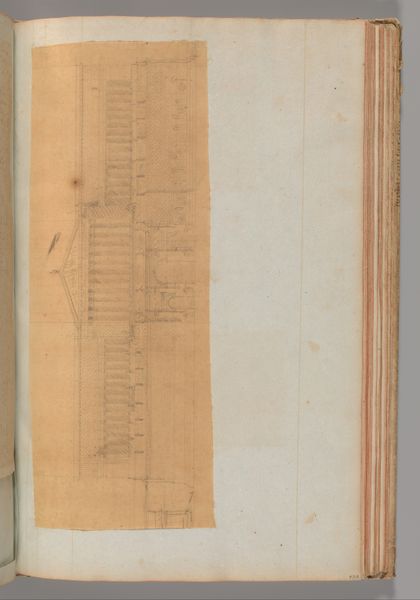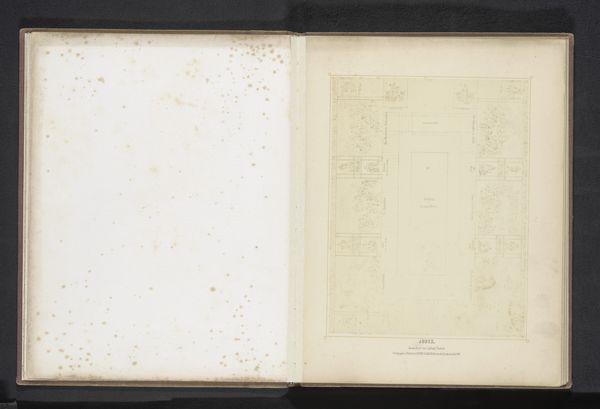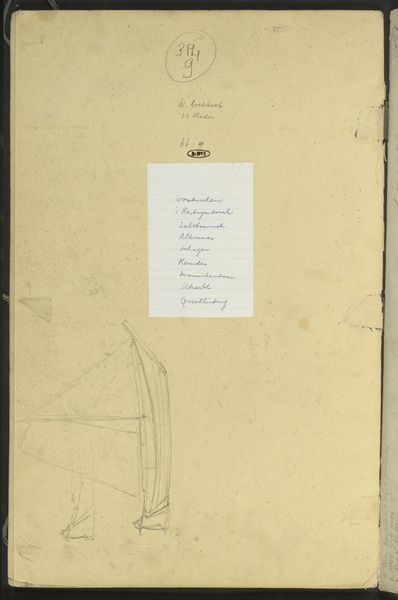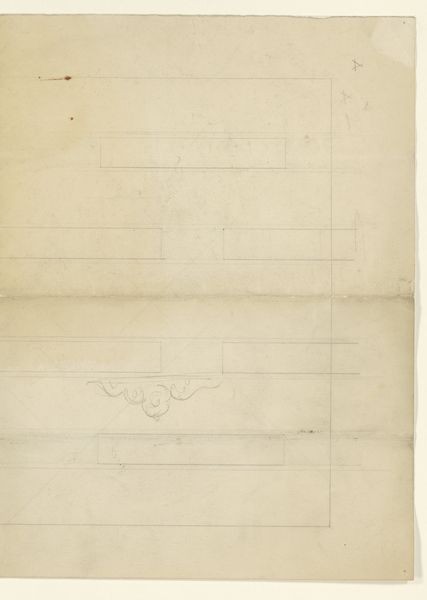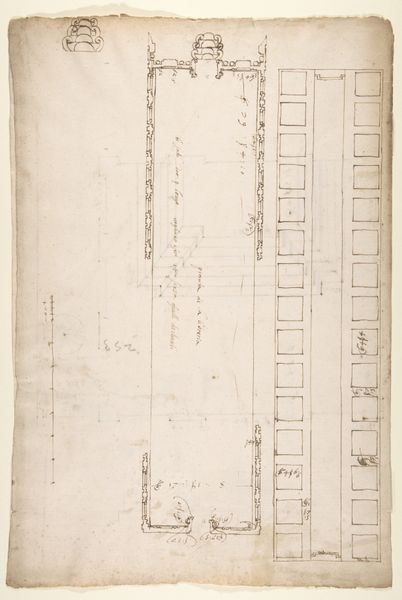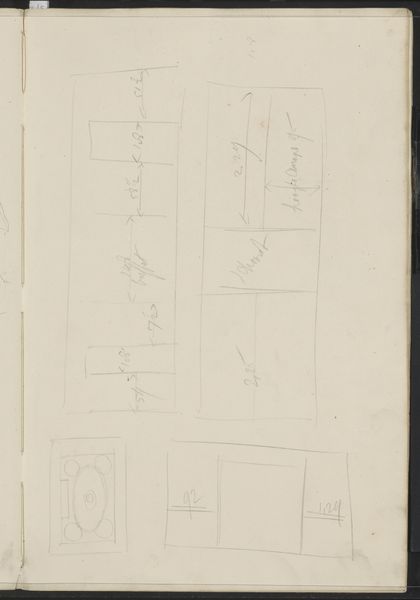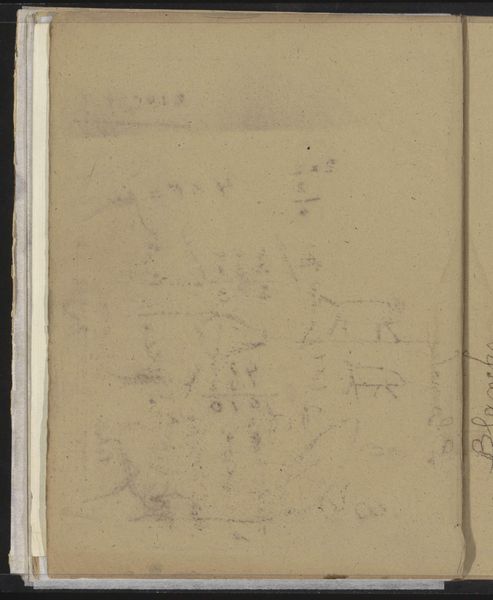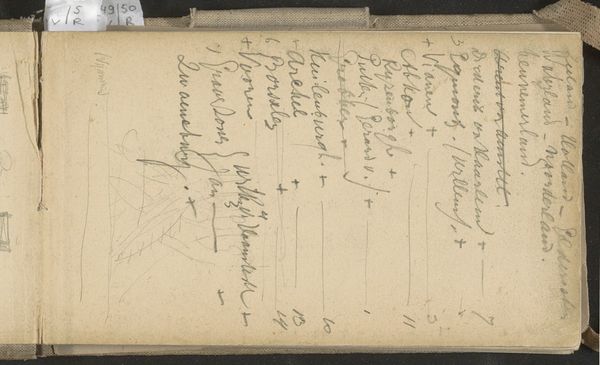
Blown-up Detail of Design in Elevation for Colonnade in the Doric or Tuscan Order (recto); Blown-up Detail of Column on Podium in Elevation 18th century
0:00
0:00
drawing, print, architecture
#
drawing
# print
#
classicism
#
academic-art
#
architecture
Dimensions: 16 5/8 x 11 5/16 in. (42.2 x 28.7 cm) (irregular borders)
Copyright: Public Domain
Curator: Here we have an architectural study attributed to an anonymous artist, created in the 18th century. The work, housed here at The Met, is titled "Blown-up Detail of Design in Elevation for Colonnade in the Doric or Tuscan Order (recto); Blown-up Detail of Column on Podium in Elevation." Editor: My immediate thought is about its function; it seems incredibly practical. Precise, measured, and completely lacking in what we might call expressive gesture. Cool, almost clinical, wouldn’t you agree? Curator: Absolutely, it speaks to a culture steeped in reason and order. Look at how each component is labeled meticulously; each element, such as the frieze and cornice, isn’t merely represented, it is categorized and defined, linking the visible world to a rational framework of classical architecture. It speaks volumes about the intellectual climate of the era. Editor: What interests me, though, is how even this functional draftsmanship embraces classical principles. Notice how the lines, although technical, achieve balance through proportional relationships; one form always leading gracefully into another. And there’s also that faint suggestion of the human hand despite the precise measurements and grid work that you can still see. Curator: True. These drawings functioned not just as blueprints, but as embodiments of enduring principles of harmony and proportion. The Doric and Tuscan orders carry cultural weight, linking the structures they inform back to classical antiquity, to its values and ideals. What is communicated is an association with power and an aspiration for enduring stability, even in a detail as minor as the dimensions for an architectural feature. Editor: I suppose even the most technically driven form bears symbolic weight, especially when it invokes classicism. Thanks, that gives me a different perspective. Curator: Likewise. Considering the image purely through composition would not explain why the ancients looked at structures like these and felt comforted, grounded by association to an architectural past, just like them.
Comments
No comments
Be the first to comment and join the conversation on the ultimate creative platform.
